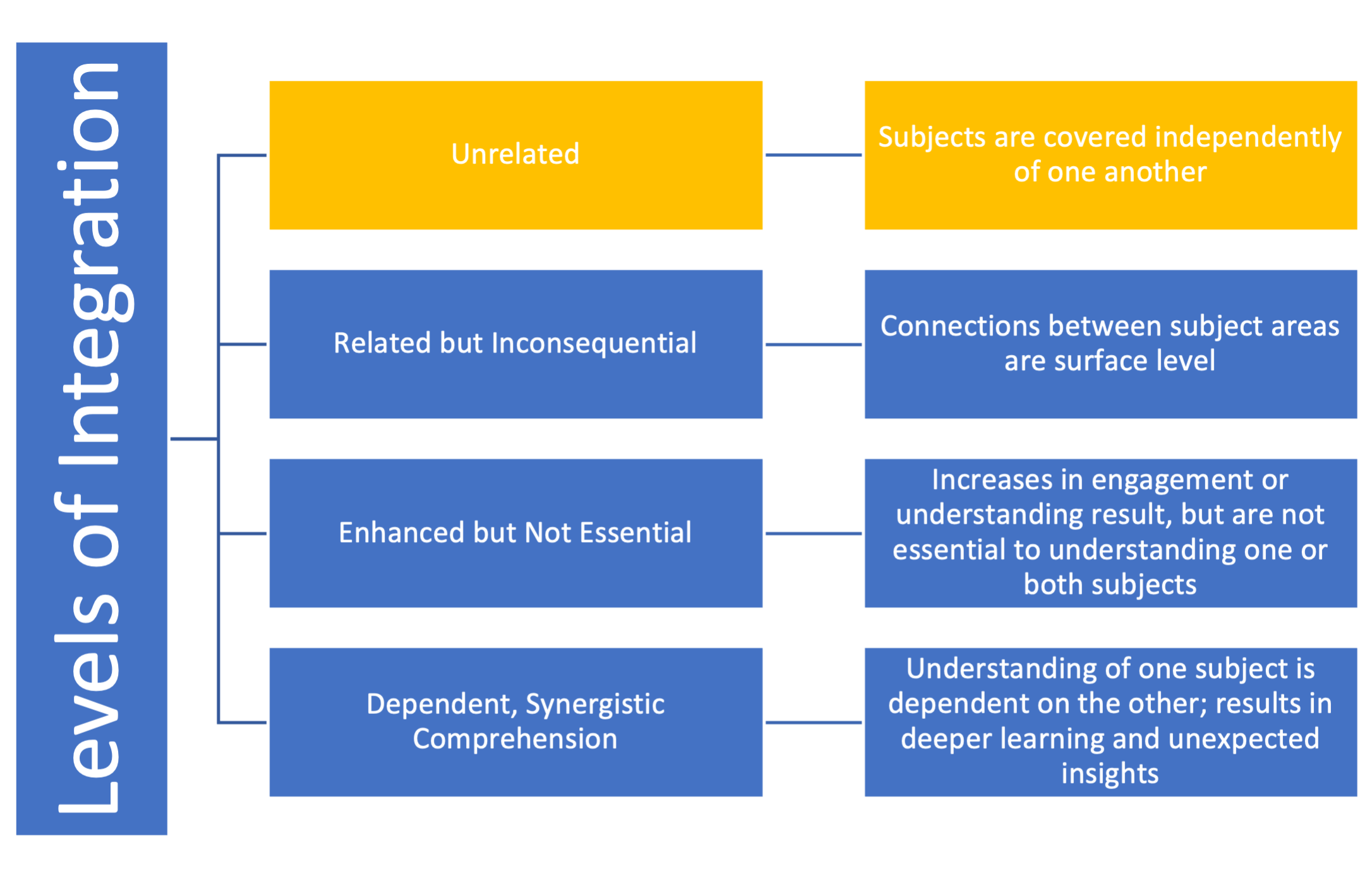Unit 1: Introduction to STEM
What is integrated STEM education?
The Integrated STEM education report from the National Research Council (2014) acknowledges that integration can mean very different things. “Far from being a single, well-defined experience, integrated STEM education includes a range of different experiences that involve some degree of connection. The experiences may occur in one or several class periods, throughout a curriculum, be reflected in the organization of a single course or an entire school, or be encompassed in an out-of-school activity. Each variant of integrated STEM education suggests different planning approaches, resource needs, implementation challenges, and outcomes.” (p. 2: NRC, 2014).
Therefore, they define integration as, “working in the context of complex phenomena or situations on tasks that require students to use knowledge and skills from multiple disciplines.” (p. 51, NRC, 2014). The NRC report goes on to discuss three elements in determining scope and nature of integration:
- type of STEM connections
- disciplinary emphasis, and
- duration, size, and complexity of initiative.
“Regarding the nature of connection, integrated STEM education may bring together concepts from more than one discipline (e.g., mathematics and science, or science, technology, and engineering); it may connect a concept from one subject to a practice of another, such as applying properties of geometric shapes (mathematics) to engineering design; or it may combine two practices, such as science inquiry (e.g., doing an experiment) and engineering design (in which data from a science experiment can be applied).
In integrated STEM education it is frequently the case that one STEM subject has a dominant role—the explicit or implicit focus of a project, program, or school is to develop students’ knowledge or skill mainly in one content area, such as mathematics…The inclusion of concepts or practices from other subjects is often intended to support or deepen learning and understanding in the targeted subject.
In terms of scope, integrated STEM education initiatives exhibit a variety of relevant parameters, such as duration, setting, size, and complexity. Initiatives may occur as a single hour-long project or over one or several class periods, or they may be reflected in the organization of a single course, a multicourse curriculum, or an entire school. Most of the programs we examined have very small footprints, existing as pilot efforts involving just a few students. But some have been implemented much more broadly, some-times across several schools or states, engaging hundreds or thousands of participants.”
(NRC, 2014)
Levels of Integration
Once we determine the type of STEM connection, disciplinary emphasis, and scope, we also must consider the level of integration in an individual activity. We can think of integrated STEM education in terms of levels or depth of integration. Look at Figure 2. Note that the top is the least integrated, and as we move down, the integration is more meaningful and deeper, and the content of one domain depends more heavily on the content in the other. Integrating subjects can be labor intensive in planning and implementation, so consider how likely the integration is to extend student learning when making instructional choices about when and what to integrate. For the greatest impact on student learning, comprehension of the content in one subject area should be dependent on the content from the other subject area(s). For example, if students are exploring the best designs to solve an engineering problem, their abilities to measure results and arrange them in a graphical form are essential to their understanding of the engineering. Likewise, the math skills are best used and understood within the context of the real-world engineering problem.
If, on the other hand, integration is surface level (related but inconsequential), the impact of the integration on student understanding is low; therefore, it might be preferable to teach specific topics or skills separately. Regardless of depth of integration, there are often times when discipline-specific skills need to be taught directly. Taking time to review or practice the process for two-digit subtraction, for example, is may be best accomplished with a focus on math. Then students can apply that skill within the context of an integrated STEM activity.

